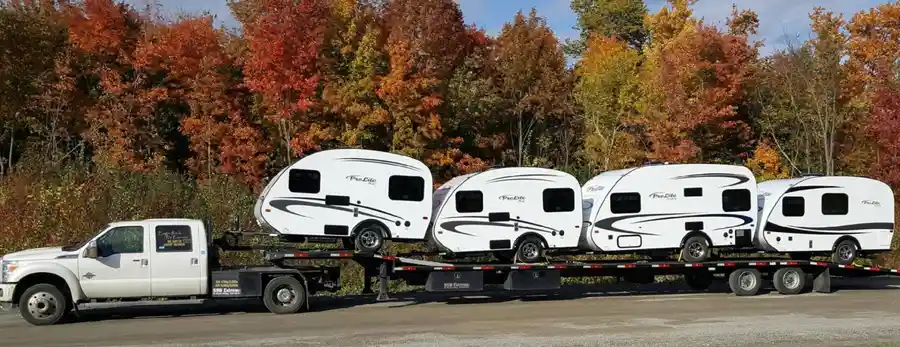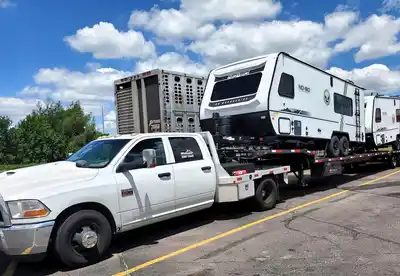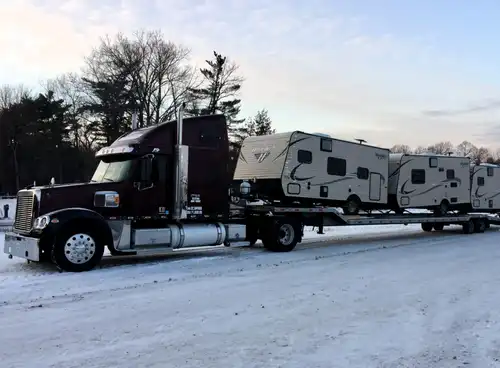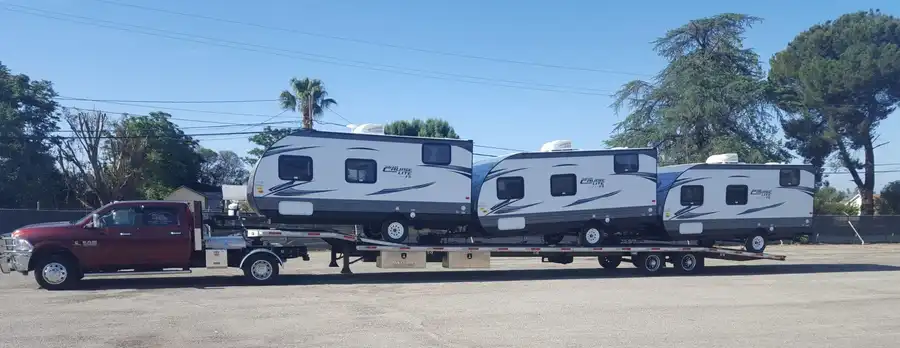Recreational vehicles (RVs) have become increasingly popular as more people are drawn to the freedom and flexibility they offer. However, there may be times when you need to transport your RV over long distances or when you’re unable to drive it yourself. In these situations, proper preparation and planning are essential to ensure a safe and efficient transportation process.
In this article, we will walk you through the essential steps to follow when preparing your RV for transportation. As experts in the industry, Xpel1 car transporter is committed to helping you protect your investment and enjoy a stress-free transportation experience.
Selecting the Right Transportation Method
Choosing the most suitable transportation method for your RV is a critical first step. There are two primary options: transporting the RV yourself or hiring a professional service like Xpel1.
- Self-transportation: If you have experience towing large vehicles and the necessary equipment, you may consider transporting your RV on your own. However, be aware that you will be responsible for ensuring your vehicle complies with local regulations, obtaining the necessary permits, and bearing the risks associated with towing.
- Professional RV transportation service: Hiring a professional service like Xpel1 is a convenient and stress-free option. Our experienced team will handle all aspects of the transportation process, from obtaining permits to ensuring your RV is delivered safely and efficiently. Additionally, our services are insured, providing you with peace of mind during the transportation process.
When deciding between self-transportation and professional services, consider factors such as cost, time, experience, and risk tolerance. For most RV owners, using a professional service is the best choice due to the expert knowledge, comprehensive insurance, and specialized equipment we provide.
Once you have chosen your preferred transportation method, it’s essential to determine the most suitable type of transport for your specific RV. Towing the RV behind a vehicle, using a trailer, or employing a flatbed truck are all viable options, each with its advantages and disadvantages. Consulting with a professional service can help you make an informed decision based on your RV’s size, weight, and other requirements.
Remember that regardless of the transportation method you choose, ensuring proper documentation and permits are in place is crucial to avoid any legal issues during the transportation process.
Performing a Thorough Inspection
Before transporting your RV, it’s crucial to perform a comprehensive inspection to identify any existing damage or potential issues that may arise during the transportation process. This step will not only protect your investment but also help you avoid complications and additional costs. We recommend following these guidelines to conduct a thorough inspection:
- Exterior inspection: Examine the RV’s exterior for signs of damage, such as dents, scratches, or cracked windows. Pay special attention to the roof, as it may be more susceptible to damage during transport. Additionally, check the condition of the tires, ensuring they are properly inflated and free of any visible defects. Inspect the brakes, lights, and other essential components to guarantee their proper functioning.
- Interior inspection: Walk through the RV’s interior and ensure all appliances, furniture, and fixtures are in good working order. Take note of any pre-existing damage, such as stains or tears in upholstery, and test all systems (e.g., electrical, plumbing) to ensure they are functioning correctly.
- Pre-transportation checklist: Create a detailed checklist of all items that need to be inspected before transportation, and use it as a guide during your inspection process. This list should include the items mentioned above, as well as any other components specific to your RV.
- Documentation: Document the current condition of your RV using photos and detailed notes. This step is essential for insurance purposes and will serve as evidence in case any damage occurs during transportation. Share this documentation with transportation company to ensure everyone is on the same page.
Preparing the RV’s Exterior
After completing a thorough inspection, it’s time to prepare your RV’s exterior for transportation. These essential steps will help minimize the risk of damage during the journey and ensure your RV arrives in the same condition it left.
- Secure all doors, windows, and hatches: Double-check that all entry points, including doors, windows, and storage compartments, are closed and securely locked. Use heavy-duty tape or bungee cords if necessary to reinforce locks and prevent unwanted openings during transport.
- Remove or retract awnings and external attachments: Remove any detachable external accessories, such as satellite dishes, antennas, or bike racks. If your RV has an awning, ensure it is fully retracted and secured to prevent damage from wind or debris. Consult your RV’s owner’s manual for specific instructions on how to properly secure these items.
- Protect the RV from potential damage: Consider investing in a high-quality RV cover designed for transportation, which can shield your vehicle from weather-related damage, dust, and debris. Additionally, you may want to protect vulnerable areas, such as windows and mirrors, using temporary padding or covers.
- Disconnect external utilities: If your RV is connected to any external utilities (e.g., water, electricity, or sewer), ensure they are disconnected and properly stored. Consult your owner’s manual for guidelines on how to safely disconnect and store these utilities.
By following these steps, you can minimize the risk of damage to your RV’s exterior during transportation. As always, working with a professional transportation company like Xpel1 can provide added security and peace of mind.
Preparing the RV’s Interior
Ensuring the safety of your RV’s interior is just as important as protecting its exterior. Properly securing the inside of your RV can prevent damage to the contents and the vehicle itself during transportation. Follow these steps to prepare your RV’s interior:
- Secure loose items and remove valuables: Store and secure all loose items, such as kitchenware, electronics, and personal belongings. Consider removing valuable items, as well as important documents and medication, and transport them separately for added security. Use straps, bungee cords, or heavy-duty tape to fasten furniture and appliances in place.
- Disconnect appliances and electronics: Turn off and unplug all electrical appliances, including refrigerators, ovens, and air conditioning units. If possible, remove TVs and other electronic devices and pack them securely in their original boxes or cushioned containers.
- Empty and clean holding tanks: Drain the fresh, gray, and black water tanks to avoid potential leaks and spills during transportation. Clean the tanks according to the manufacturer’s instructions, and if you’re transporting your RV in cold weather, make sure the water system is properly winterized.
Preparing for the Transportation Process
As you approach the transportation date, take the following steps to ensure a smooth and stress-free process:
- Communicate with the transportation company: If you’re working with a professional service like Xpel1, maintain open lines of communication to confirm pickup and delivery dates, share your pre-transportation checklist and documentation, and discuss any special requirements.
- Confirm insurance coverage and gather necessary paperwork: Ensure your RV’s insurance policy covers transportation-related risks, and gather all necessary documents, such as registration, proof of insurance, and transportation permits.
- Plan the route and schedule: Account for weather and road conditions when planning the transportation route and schedule, allowing for extra time in case of unforeseen delays.
Post-Transportation Inspection and Reassembly
Once your RV has been transported, it’s important to perform a post-transportation inspection to identify any potential damage or issues that may have occurred during the process. Compare your post-transportation inspection with your pre-transportation documentation to ensure no new damage has been sustained. If you notice any discrepancies, contact your transportation company to discuss potential resolutions. After the inspection, reassemble and reconnect any components that were removed or disconnected before transportation, and ensure your RV is fully operational before using it again.
Properly preparing your RV for transportation is crucial to ensure a safe and efficient journey. By following the essential steps outlined in this article, you can protect your investment and enjoy a stress-free transportation experience. Remember to consult with a professional service for expert guidance and support throughout the process. By entrusting your RV to experienced professionals and taking the necessary precautions, you can have peace of mind knowing that your beloved home on wheels will arrive at its destination in the same condition it left, ready for your next adventure.




